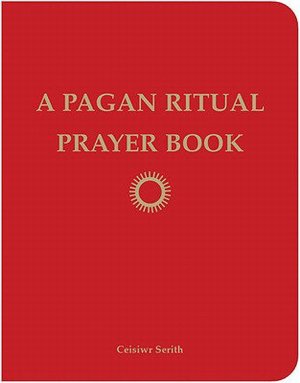
Let’s be honest: It takes a brave person to publish a Pagan ritual and prayer book. Why? Because Paganism, with all of the various flavors under its extremely large umbrella—Wicca/Witchcraft being one of the more popular among them—is very diverse. I wondered how you could make a book that would attempt to please so many different spiritual paths.
The outcome wasn’t really in doubt, however; this is not Ceisiwr Serith’s first work on the topic. His 2002 work, “A Book of Pagan Prayer”, also sits on my shelf and was a fantastic find, and if you have it, don’t fret. It’s new material and you’ll want to have both of them.
Here’s my first tip: Don’t skip over Part I. It’s easy to go right to Part II, where the rituals and prayers are listed. But if you do, you’ll miss the ritual-building toolkit, a fact that isn’t given away by the title; it was a pleasant surprise. Serith starts off by talking about prayer and ritual in a very general sense, breaking down these simple yet esoteric terms into their basic structures. He also discusses the relationship between prayer and ritual, which I felt was an important addition. If you are not Pagan, or if you are and have never written your own prayers, you’ll feel happy that the author included a section on poetic language, meter and rhyme, and other aspects of the design and performance of prayers and rituals.
Part II has some amazing prayers and rituals in it. I think what pleased me the most was that they are not only split up into categories that Pagans will find useful—the seasons, rites of passage, and home blessings, to name but a few—but that many are written for specific gods and goddesses, or aspects of the God and Goddess. Many Pagans change which deities they work with regularly, so it kept the work from being only two-dimensional. Some are not related to a particular deity or pantheon, but to a particular element or event (“rain spirits”, “storm gods, etc.).
The texts that are included in this book are many and varied. Some are as short as a sentence while others are much longer. Some rhyme and some do not. For certain holidays, such as Imbolc, there are only two prayers, one notably to Brighid who is often celebrated on this day; for other occasions, there are more than a few to pick from. At times the language is very poetic, but it can also be very conversational and down-to-earth. In short, every Pagan should be able to find something useful for any given occasion.
Part III has “petitions”—personal requests from the person to the deity or deities of his/her choice. Prayers of inspiration, personal protection or prosperity, and even blessings for the nation or the world can be found here. Many prayers for America and its government officials are also available for use, a topic that I never expected to find.
While many of the prayers reference specific gods or goddesses, the book provides some basic information if the deity is new to you. The appendices suggest offerings for different types of deities, and include a glossary of gods and goddesses if you are looking to expand your spiritual horizons.
This book makes an excellent addition to the library of any Pagan, or anyone with an interest in Pagan prayer or ritual. I keep finding myself looking at this book, turning to a different page, and finding interesting, powerful prayers. The book is a little thicker than most, but it is compact and easily tucked away in a bedside table or purse, or kept with a travel altar or other ritual equipment. It is definitely one that should be kept handy.
~review by John Marani
Author: Ceisiwr Serith
Red Wheel/Weiser, 2011
pp. 338, $19.95
